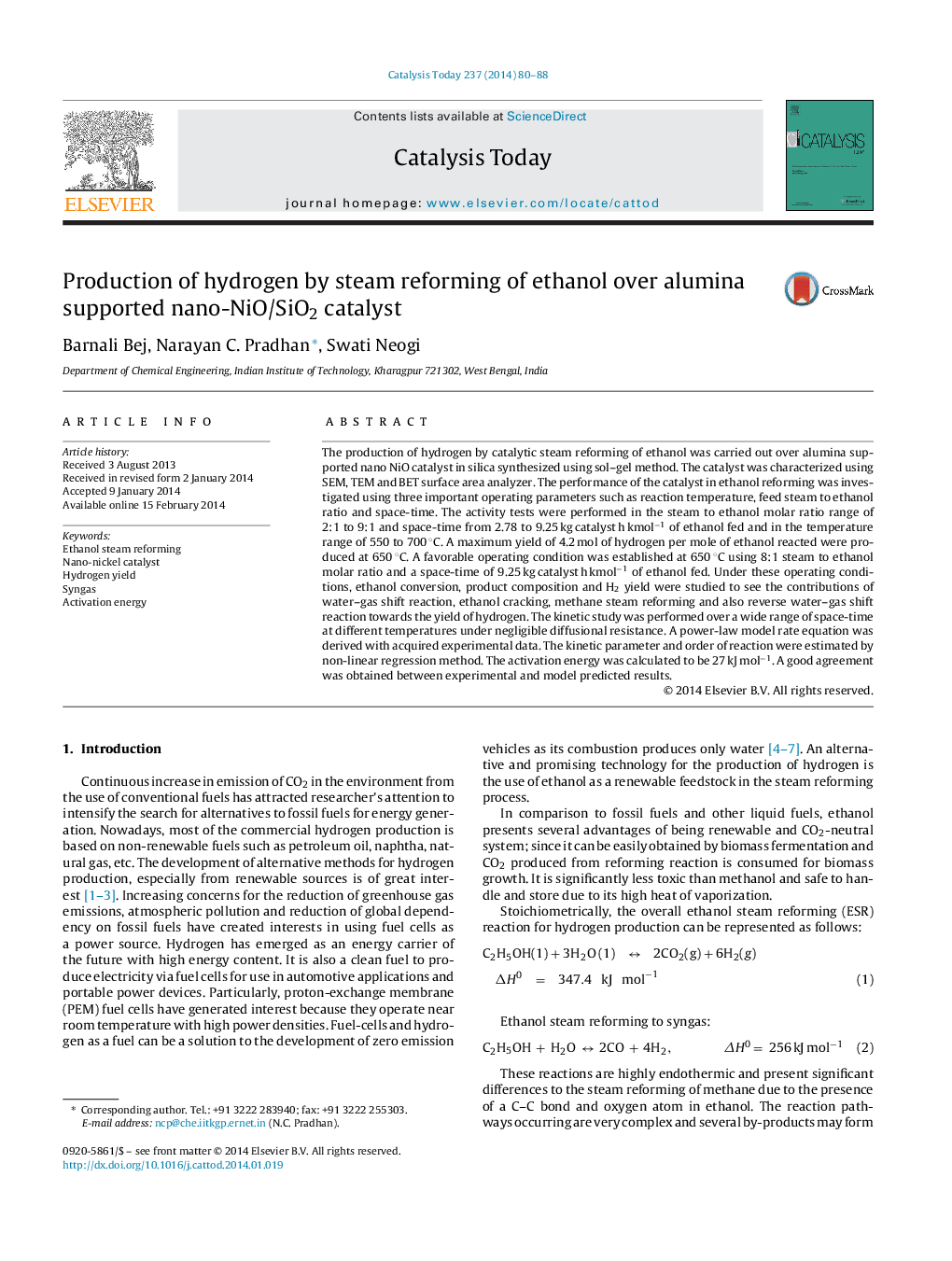| کد مقاله | کد نشریه | سال انتشار | مقاله انگلیسی | نسخه تمام متن |
|---|---|---|---|---|
| 53979 | 46991 | 2014 | 9 صفحه PDF | دانلود رایگان |

• Alumina supported nano-NiO/SiO2 catalyst was prepared indigenously and used for ethanol steam reforming (ESR).
• The catalyst was found to be very active for ESR and quite stable.
• Under certain conditions, a maximum ethanol conversion of 97% and a maximum yield of 4.2 mol of hydrogen per mole of ethanol reacted were obtained.
• A power law type rate equation well-fitted the kinetic data.
• The activation energy for the ESR reaction was determined to be 27 kJ mol−1.
The production of hydrogen by catalytic steam reforming of ethanol was carried out over alumina supported nano NiO catalyst in silica synthesized using sol–gel method. The catalyst was characterized using SEM, TEM and BET surface area analyzer. The performance of the catalyst in ethanol reforming was investigated using three important operating parameters such as reaction temperature, feed steam to ethanol ratio and space-time. The activity tests were performed in the steam to ethanol molar ratio range of 2:1 to 9:1 and space-time from 2.78 to 9.25 kg catalyst h kmol−1 of ethanol fed and in the temperature range of 550 to 700 °C. A maximum yield of 4.2 mol of hydrogen per mole of ethanol reacted were produced at 650 °C. A favorable operating condition was established at 650 °C using 8:1 steam to ethanol molar ratio and a space-time of 9.25 kg catalyst h kmol−1 of ethanol fed. Under these operating conditions, ethanol conversion, product composition and H2 yield were studied to see the contributions of water–gas shift reaction, ethanol cracking, methane steam reforming and also reverse water–gas shift reaction towards the yield of hydrogen. The kinetic study was performed over a wide range of space-time at different temperatures under negligible diffusional resistance. A power-law model rate equation was derived with acquired experimental data. The kinetic parameter and order of reaction were estimated by non-linear regression method. The activation energy was calculated to be 27 kJ mol−1. A good agreement was obtained between experimental and model predicted results.
Figure optionsDownload high-quality image (73 K)Download as PowerPoint slide
Journal: Catalysis Today - Volume 237, 15 November 2014, Pages 80–88